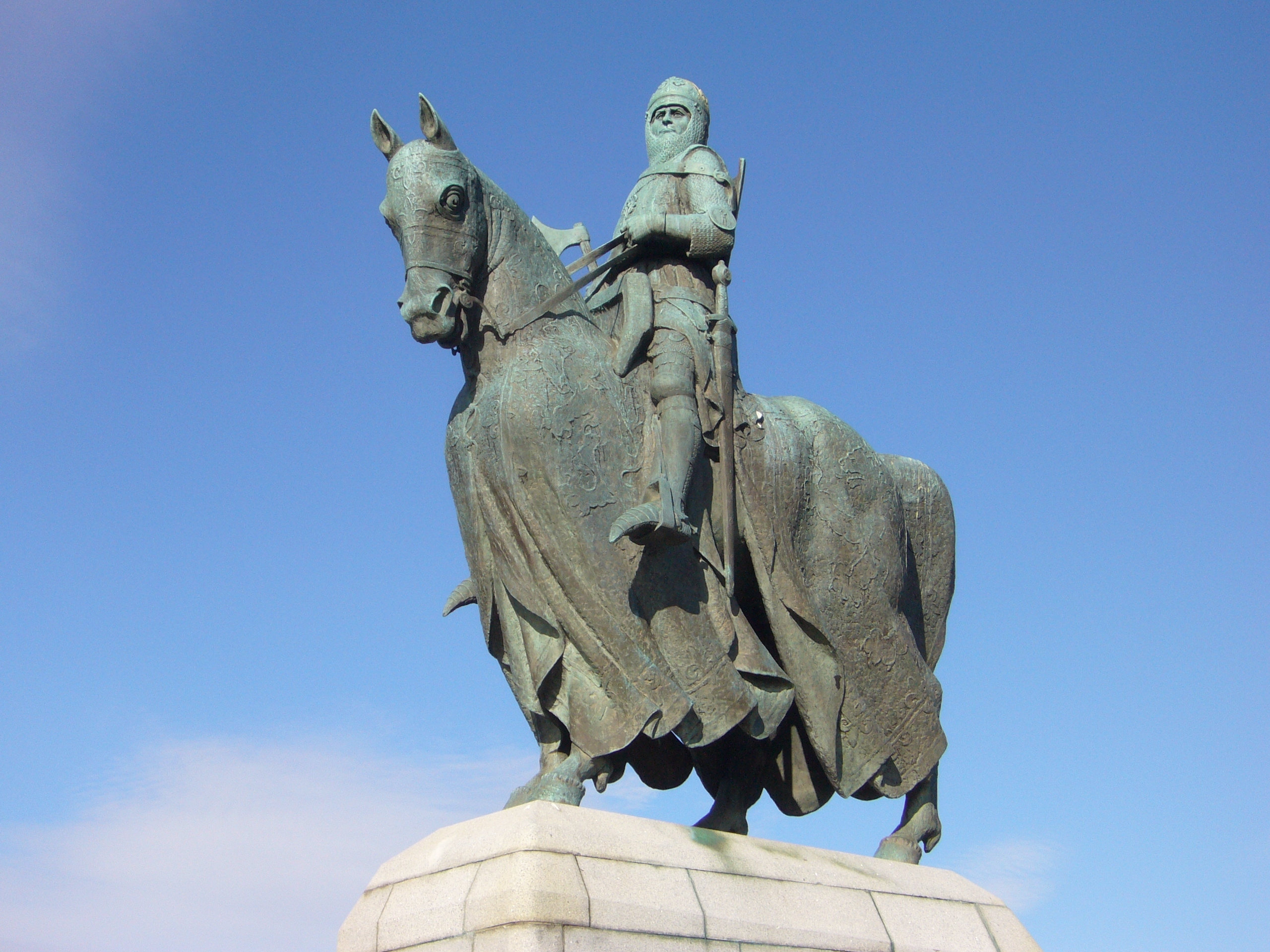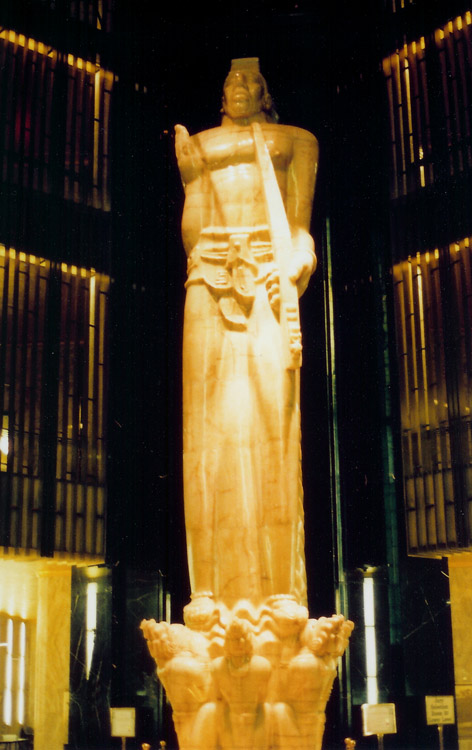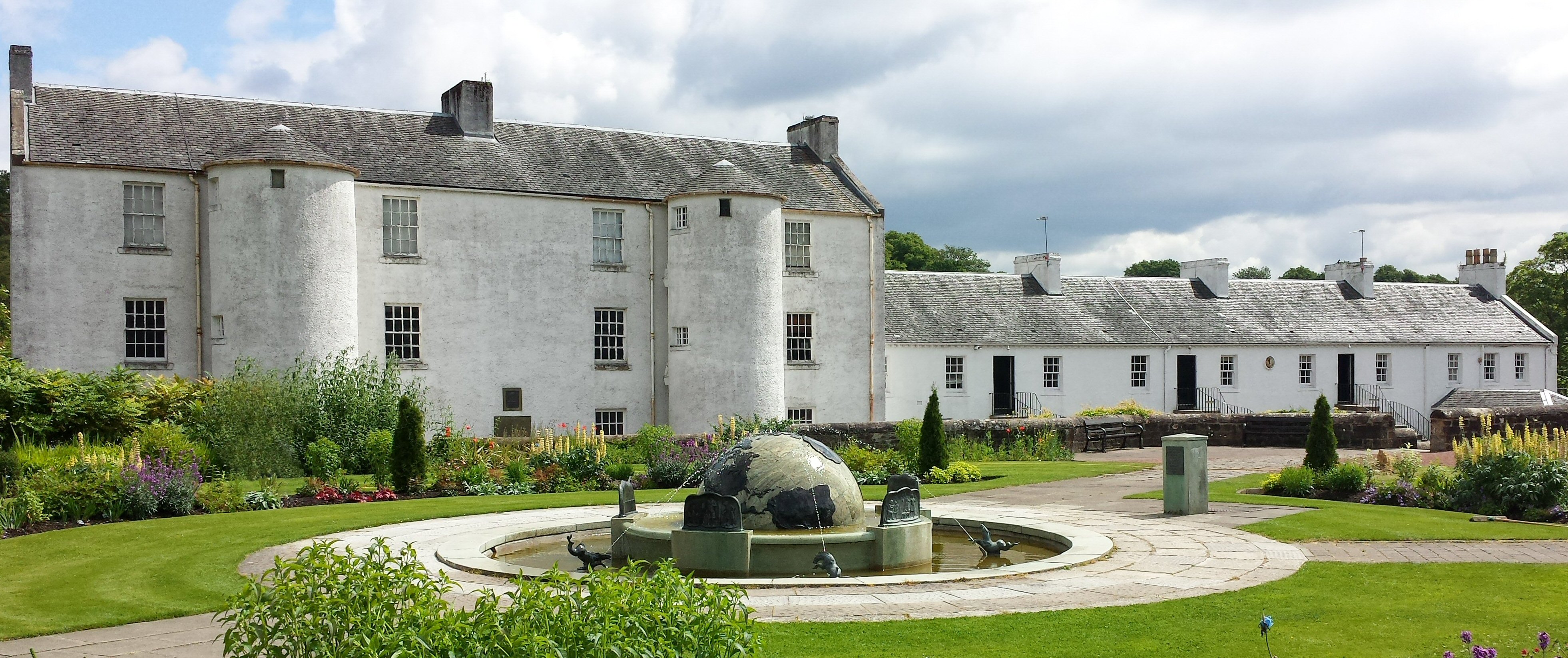|
Pilkington Jackson
Charles d’Orville Pilkington Jackson Royal Scottish Academy, RSA, FRBS, FRSA (11 October 1887 – 20 September 1973) was a British sculptor prominent in Scotland in the 20th Century. Throughout his career he worked closely with the architect Sir Robert Lorimer. He is most noteworthy for his creation of one of Scotland’s most iconic landmarks, the Equestrian statue of Robert the Bruce, Bannockburn, statue of Robert the Bruce at Bannockburn. Early life Charles d'Orville Pilkington Jackson was born at Garlenick near Grampound, Cornwall the son of Ethel Katie D'Orville Smith. She had married his father on the 3rd May 1886, 22 year old medical student Louis Pilkington Jackson in an irregular marriage at 138 George Street, Glasgow. Charles attended the Stewart's Melville College, Edinburgh Institution from 1905 and the newly established Edinburgh College of Art in 1907, studying design and sculpture. He graduated in 1910 and received a travelling scholarship of £100, which he us ... [...More Info...] [...Related Items...] OR: [Wikipedia] [Google] [Baidu] |
Grampound
Grampound ( kw, Ponsmeur) is a village in Cornwall, England. It is at an ancient crossing point of the River Fal and today is on the A390 road west of St Austell and east of Truro.Ordnance Survey: Landranger map sheet 204 ''Truro & Falmouth'' Grampound with Creed (where the 2011 census population is included) is the civil parishes in England, civil parish of which the village of Grampound and the village of Creed, Cornwall, Creed are the main settlements. Formerly, part of Grampound was in the parish of Creed and part was in the parish of Probus, Cornwall, Probus. The name Grampound comes from the Norman French: grand (great), pont (bridge), referring to the bridge over the River Fal, with its spelling varying over the last 600 years following the name Ponsmur (Cornish) which was recorded in 1308. The population of Grampound with Creed was 654 in the 2011 census. History The area around Grampound was settled in prehistoric times, and in the early medieval period the parish ... [...More Info...] [...Related Items...] OR: [Wikipedia] [Google] [Baidu] |
Royal Field Artillery
The Royal Field Artillery (RFA) of the British Army provided close artillery support for the infantry. It came into being when created as a distinct arm of the Royal Regiment of Artillery on 1 July 1899, serving alongside the other two arms of the regiment, the Royal Horse Artillery (RHA) and the Royal Garrison Artillery (RGA). It ceased to exist when it was amalgamated with the Royal Garrison Artillery in 1924. The Royal Field Artillery was the largest arm of the artillery. It was responsible for the medium calibre guns and howitzers deployed close to the front line and was reasonably mobile. It was organised into brigades, attached to divisions or higher formations. Notable members *Ernest Wright Alexander, Victoria Cross recipient *Colin Gubbins (1896–1976), prime mover of the Special Operations Executive (SOE) * Dar Lyon (1898–1964). first-class cricketer *Norman Manley (1893–1969), first Premier of Jamaica, serving from 14 August 1959 to 29 April 1962 * D ... [...More Info...] [...Related Items...] OR: [Wikipedia] [Google] [Baidu] |
DoCoMoMo Key Scottish Monuments
DoCoMoMo Key Scottish Monuments is a list of 60 notable post-war buildings in Scotland, compiled in 1993 by the international architectural conservation organisation DoCoMoMo. The buildings date from the period 1945–1970, and were selected by a panel as being significant examples of architectural style, building materials and location. The purpose was in part to raise the profile of post-war architecture, and to "demonstrate that architecture, as an art, flourished during those years".Glendinning (ed.), p.153 The list was the basis for an exhibition at the Royal Incorporation of Architects in Scotland, aimed at introducing some of these buildings as "heritage". The predominant view of post-war architecture, and of many modernist buildings in particular, was not favourable in the UK at the time, and the list was intended to inform the statutory listing of significant works. Some of the buildings, for example Notre Dame High School, had already been listed by Historic Scotland be ... [...More Info...] [...Related Items...] OR: [Wikipedia] [Google] [Baidu] |
Listed Building
In the United Kingdom, a listed building or listed structure is one that has been placed on one of the four statutory lists maintained by Historic England in England, Historic Environment Scotland in Scotland, in Wales, and the Northern Ireland Environment Agency in Northern Ireland. The term has also been used in the Republic of Ireland, where buildings are protected under the Planning and Development Act 2000. The statutory term in Ireland is " protected structure". A listed building may not be demolished, extended, or altered without special permission from the local planning authority, which typically consults the relevant central government agency, particularly for significant alterations to the more notable listed buildings. In England and Wales, a national amenity society must be notified of any work to a listed building which involves any element of demolition. Exemption from secular listed building control is provided for some buildings in current use for worship, ... [...More Info...] [...Related Items...] OR: [Wikipedia] [Google] [Baidu] |
Battle Of Bannockburn
The Battle of Bannockburn ( gd, Blàr Allt nam Bànag or ) fought on June 23–24, 1314, was a victory of the army of King of Scots Robert the Bruce over the army of King Edward II of England in the First War of Scottish Independence. It was a major turning point in the war, which only officially ended 14 years later with the ''de jure'' restoration of Scottish independence under the Treaty of Edinburgh–Northampton; for this reason, Bannockburn is considered a landmark moment in Scottish history. King Edward II invaded Scotland after Bruce demanded in 1313 that all supporters, still loyal to ousted Scottish king John Balliol, acknowledge Bruce as their king or lose their lands. Stirling Castle, a Scots royal fortress occupied by the English, was under siege by the Scottish army. King Edward assembled a formidable force of soldiers to relieve it – the largest army ever to invade Scotland. The English summoned 25,000 infantry soldiers and 2,000 horses from England, Ireland a ... [...More Info...] [...Related Items...] OR: [Wikipedia] [Google] [Baidu] |
Carl Milles
Carl Milles (; 23 June 1875 – 19 September 1955) was a Swedish sculptor. He was married to artist Olga Milles (née Granner) and brother to Ruth Milles and half-brother to the architect Evert Milles. Carl Milles sculpted the Gustaf Vasa statue at the Stockholm Nordic Museum, the Poseidon statue in Gothenburg, the Orpheus group outside the Stockholm Concert Hall, and the Fountain of Faith in Falls Church, Virginia. His home near Stockholm, Millesgården, became his resting place and is now a museum. Biography He was born as Carl Wilhelm Emil Andersson, son of lieutenant August Emil Sebastian "Mille" Andersson (1843-1910) and his wife Walborg Alfhild Maria Tisell (1846-1879), at Lagga outside Uppsala in 1875. In 1897 he made what he thought would be a temporary stop in Paris on his way to Chile, where he was due to manage a school of gymnastics. However, he remained in Paris, where he studied art, working in Auguste Rodin's studio and slowly gaining recognition as a sculptor ... [...More Info...] [...Related Items...] OR: [Wikipedia] [Google] [Baidu] |
Sir Frank Mears
Sir Frank Charles Mears LLD (11 July 1880 – 25 January 1953) was an architect and Scotland's leading planning consultant from the 1930s to the early 1950s. Life and work Born in Tynemouth he moved to Edinburgh in 1897 when his father, Dr William Pope Mears (1855-1901), was appointed to a lecturing post in the Anatomy Department of Edinburgh University. His mother, Isabella Bartholomew LDCPE (1853-1936), was one of the first licensed physicians in Scotland and an early Taoist author. The family lived at Woodburn House on Canaan Lane in the Morningside district of Edinburgh. He trained as an architect, initially under Hippolyte Blanc (1896-1901), and then, in 1903, under Robert Weir Schultz (1860-1951). In 1906, after tours of England and the Continent, he returned to Scotland and worked under Ramsay Traquair (1874-1952). In 1908 he became an assistant to the pioneer planner Patrick Geddes (1854-1932), working on the Civic Survey of Edinburgh for the first ever Town Plan ... [...More Info...] [...Related Items...] OR: [Wikipedia] [Google] [Baidu] |
Elsie Inglis
Eliza Maud "Elsie" Inglis (16 August 1864 – 26 November 1917) was a Scottish doctor, surgeon, teacher, Women's suffrage, suffragist, and founder of the Scottish Women's Hospitals for Foreign Service, Scottish Women's Hospitals. She was the first woman to hold the Order of the White Eagle (Serbia), Serbian Order of the White Eagle. Early life and education Inglis was born on 16 August 1864, in the hill station town of Naini Tal, India. Inglis had eight siblings and was the second daughter and third youngest. Her parents were Harriet Lowes Thompson and John Inglis (civil servant), John Forbes David Inglis (1820–1894), a magistrate who worked in the Indian civil service as List of Chief Commissioners of Oudh, Chief Commissioner of Oudh through the East India Company, as did her maternal grandfather. Inglis's parents considered the education of a daughter as important as that of a son, and also had them schooled in India. Elsie and her sister Eva had 40 dolls which she used t ... [...More Info...] [...Related Items...] OR: [Wikipedia] [Google] [Baidu] |
David Livingstone Centre
The David Livingstone Birthplace Museum is a biographical museum in Blantyre, South Lanarkshire, Scotland, dedicated to the life and work of the explorer and missionary David Livingstone. The museum is operated by the David Livingstone Trust and is housed in a category A listed building often referred to as Shuttle Row. The museum rests on the grounds of the David Livingstone Birthplace, which contains historic grounds as well as the museum. It is located in the former textile mill buildings which once housed 24 families including Livingstone's, and where he was born on 19 March 1813. The Collection at the David Livingstone Birthplace Museum held by The Scottish National Memorial to David Livingstone Trust (SC015490) contains a diverse range of material exploring the life, work and legacy of David Livingstone (including his family and associates) and the history of Blantyre Mills and Village. The centre depicts Livingstone's life from his early childhood working in the mill, to h ... [...More Info...] [...Related Items...] OR: [Wikipedia] [Google] [Baidu] |
Edinburgh Castle
Edinburgh Castle is a historic castle in Edinburgh, Edinburgh, Scotland. It stands on Castle Rock (Edinburgh), Castle Rock, which has been occupied by humans since at least the Iron Age, although the nature of the early settlement is unclear. There has been a royal castle on the rock since at least the reign of David I of Scotland, David I in the 12th century, and the site continued to be a royal residence until 1633. From the 15th century, the castle's residential role declined, and by the 17th century it was principally used as military barracks with a large garrison. Its importance as a part of Scotland's national heritage was recognised increasingly from the early 19th century onwards, and various restoration programmes have been carried out over the past century and a half. As one of the most important strongholds in the Kingdom of Scotland, Edinburgh Castle was involved in many historical conflicts from the Wars of Scottish Independence in the 14th century to the Jacobite ... [...More Info...] [...Related Items...] OR: [Wikipedia] [Google] [Baidu] |
Scottish National War Memorial
The Scottish National War Memorial is located in Edinburgh Castle and commemorates Scottish service personnel and civilians, and those serving with Scottish regiments, who died in the two world wars and subsequent conflicts. Its chief architect was Robert Lorimer, commissioned in 1919, and the monument was formally opened in 1927. It is housed in a redeveloped barrack block in Crown Square, at the heart of the castle, and incorporates numerous monuments. The Rolls of Honour kept in the memorial include the names of those Scots servicemen and women and Scots civilians that died in all wars after 1914. This includes all Scots who were killed as a result of enemy action or who died as a result of wounds, diseases, or injuries while serving in the British Armed Forces, the Merchant Navy, the armed forces of the Dominions, the women's services, and the nursing services, together with all members of Scottish regiments. The Rolls of Honour include those who died between 4 August 1914 ... [...More Info...] [...Related Items...] OR: [Wikipedia] [Google] [Baidu] |


.jpg)





